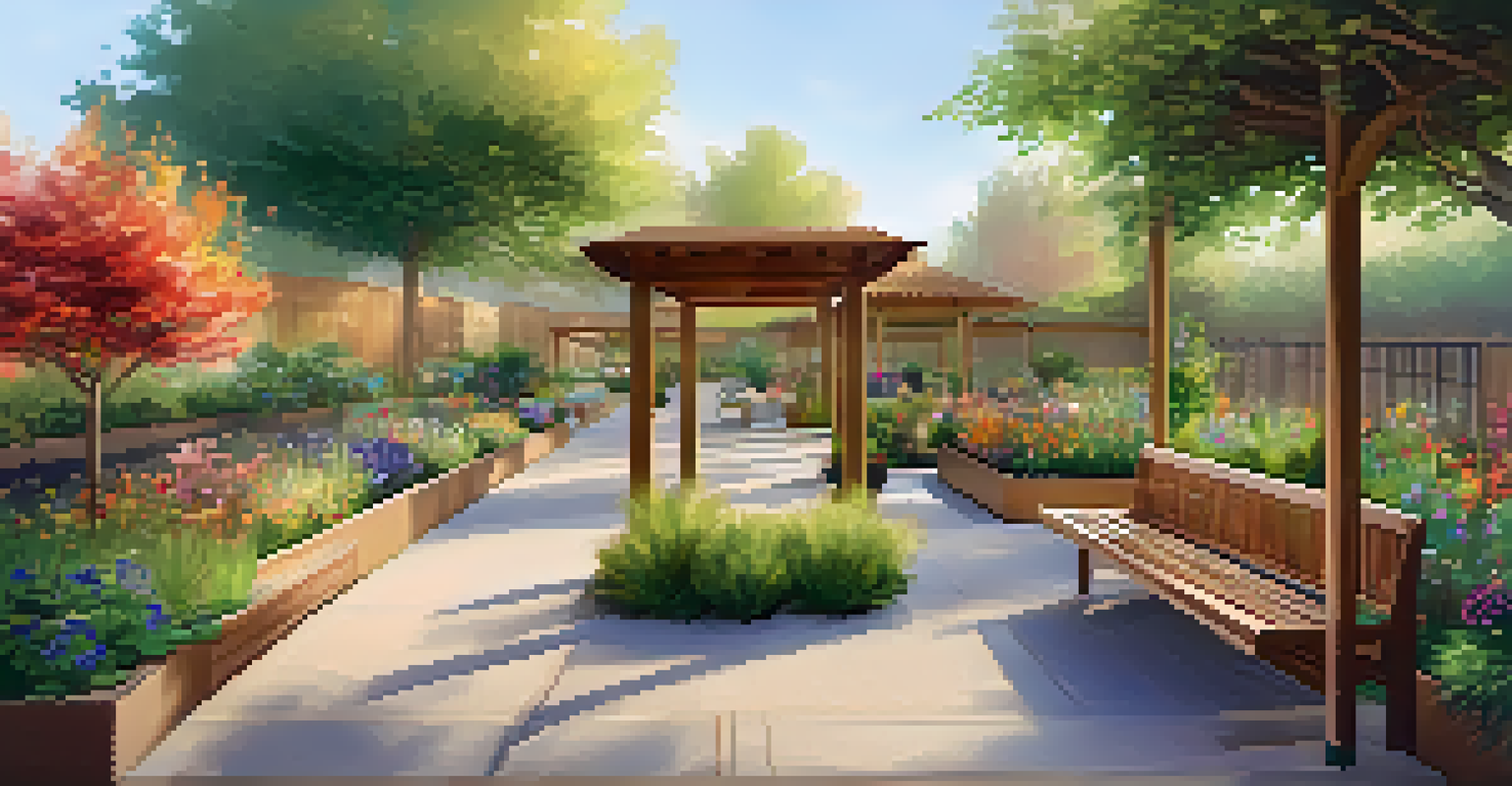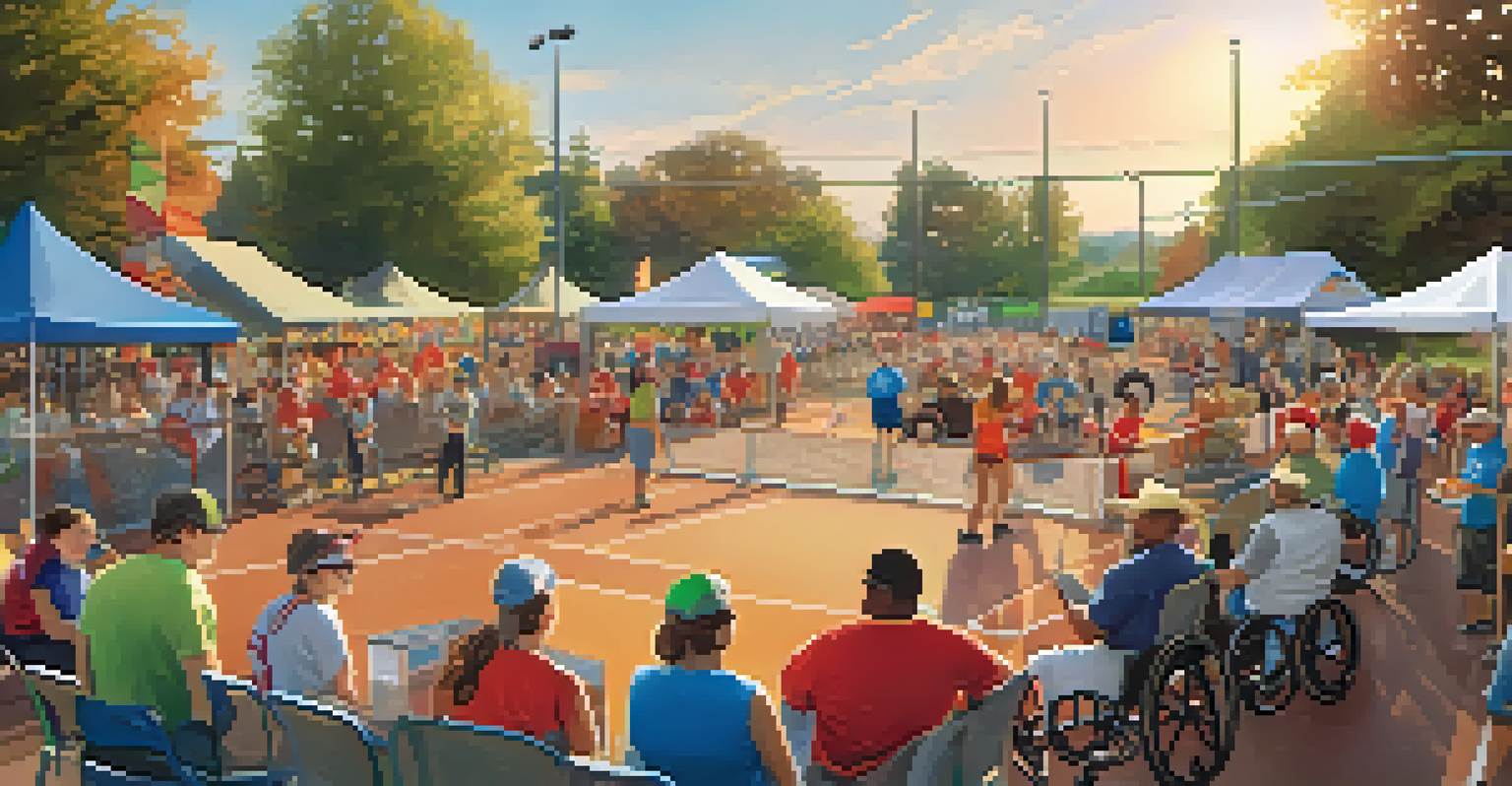Creating Accessible Outdoor Spaces for All Abilities

Understanding Accessibility in Outdoor Spaces
Accessibility means ensuring everyone can enjoy outdoor spaces, regardless of their abilities. It encompasses a wide range of needs, from mobility challenges to sensory processing differences. By embracing accessibility, we create environments where all individuals can connect with nature and each other.
Accessibility is not a privilege, it is a right. Everyone deserves to enjoy the beauty of nature, regardless of their abilities.
Imagine a park where someone using a wheelchair can easily navigate pathways, or a sensory garden designed for those with autism. These thoughtful designs enrich the experiences of all users, fostering inclusivity. When outdoor spaces are accessible, they become welcoming havens for all members of the community.
It's important to remember that accessibility isn't just about physical structures; it also includes sensory and cognitive considerations. Designing with these factors in mind opens the door to a more diverse range of experiences, ensuring that outdoor spaces serve everyone effectively.
Key Elements of Accessible Design
When designing outdoor spaces, consider key elements that enhance accessibility. Features like smooth, wide pathways, ramps instead of stairs, and benches with armrests can make a significant difference. These components create a more comfortable environment for individuals with varying abilities.

Incorporating clear signage and tactile maps can aid navigation for those with visual impairments. Using contrasting colors and large fonts enhances readability, making it easier for everyone to find their way around. By prioritizing these design elements, we can ensure that outdoor spaces are functional and enjoyable.
Embrace Accessibility for All
Creating accessible outdoor spaces ensures that everyone, regardless of ability, can enjoy and connect with nature.
Additionally, providing designated areas for sensory experiences, such as quiet zones or interactive elements, caters to diverse needs. These thoughtful touches can transform a standard park into an engaging and relaxing environment for all visitors.
Engaging with the Community for Input
Involving the community in the design process is crucial for fostering accessibility. Gathering input from individuals with disabilities ensures that their perspectives shape the environment. Community forums, surveys, and focus groups are effective ways to gather valuable insights.
The greatest gift of the garden is the restoration of the spirit.
When people feel heard and included, they are more likely to use and advocate for the spaces created. This engagement not only helps identify specific needs but also builds a sense of ownership within the community. After all, those who will use the spaces daily are the best sources of knowledge.
By collaborating with local organizations that support individuals with disabilities, designers can gain access to expertise and resources. Such partnerships can lead to innovative solutions that might not have been considered otherwise, ultimately enhancing the overall design.
Incorporating Nature for Therapeutic Benefits
Nature has a profound impact on well-being, making it essential to incorporate natural elements into outdoor spaces. Features like gardens, trees, and water bodies provide calming environments that benefit everyone, particularly those with sensory sensitivities. This connection to nature enhances the overall experience of outdoor spaces.
Designing sensory gardens with fragrant plants, textured paths, and colorful flowers can engage multiple senses. These gardens offer therapeutic benefits, promoting relaxation and reducing stress. By creating spaces that connect individuals with nature, we foster a sense of belonging and peace.
Community Input Enhances Design
Engaging the community in the design process fosters inclusivity and ensures that the needs of all users are met.
Additionally, shaded areas and seating arrangements allow for rest and reflection, catering to those who may require breaks. These thoughtful inclusions ensure that outdoor spaces are not only enjoyable but also restorative for everyone who visits.
Creating Safe and Secure Environments
Safety is a cornerstone of accessible outdoor spaces. Ensuring that pathways are well-maintained, free of obstacles, and have appropriate lighting can significantly enhance user experience. A secure environment encourages more people to use the space, fostering community interaction.
It's also essential to consider the placement of emergency services and first aid stations within outdoor areas. Clear visibility and easy access to these services can provide peace of mind for all users, particularly those with specific health needs. By prioritizing safety, we create a foundation for enjoyable outdoor experiences.
Regular maintenance and inspections play a crucial role in upholding safety standards. Keeping pathways clear and equipment in good condition shows a commitment to the well-being of all visitors, reinforcing the idea that everyone deserves a safe space to enjoy.
Promoting Inclusivity Through Recreational Activities
Offering a variety of recreational activities can enhance the accessibility of outdoor spaces. Activities like adaptive sports, nature walks, and arts and crafts allow individuals of all abilities to engage and participate. This inclusivity promotes social interaction and community bonding.
Creating adaptive playgrounds with equipment designed for children of all abilities ensures that everyone can play together. These spaces not only foster physical activity but also cultivate friendships and understanding among diverse groups. The importance of play cannot be underestimated—it’s a fundamental part of human experience.
Continuous Improvement is Key
Regular evaluations and updates to outdoor spaces help maintain accessibility and adapt to the evolving needs of the community.
Engaging local organizations to host events and activities can further promote inclusivity. These partnerships can lead to unique programming that celebrates diversity, making outdoor spaces vibrant and welcoming for all.
Evaluating and Enhancing Accessibility Regularly
Accessibility should be an ongoing commitment, not a one-time project. Regular evaluations of outdoor spaces can help identify areas that need improvement. Gathering feedback from users allows for continuous enhancement, ensuring that spaces remain welcoming and functional.
Implementing a feedback loop—where users can easily report issues or suggest improvements—creates a culture of responsiveness. This process demonstrates that the community's needs are valued and taken seriously. By prioritizing regular evaluations, we can adapt to the evolving needs of the community.

Moreover, staying informed about new accessibility standards and innovations can guide future improvements. By continuously learning and adapting, we can ensure that outdoor spaces meet the highest standards of inclusivity and accessibility.